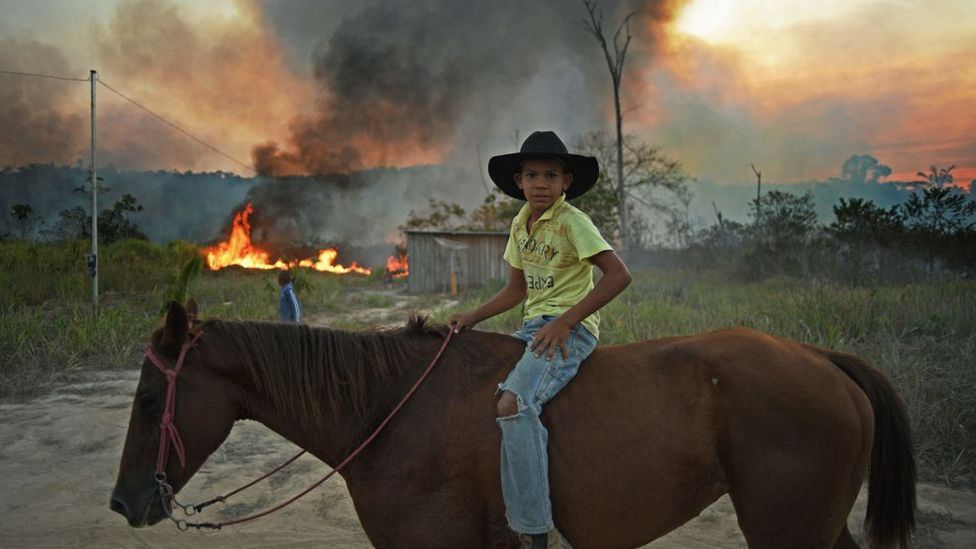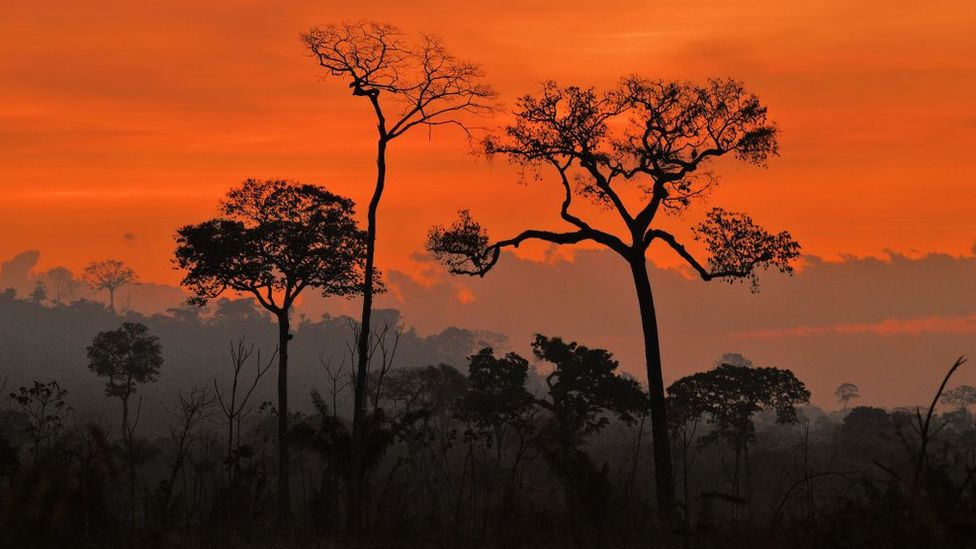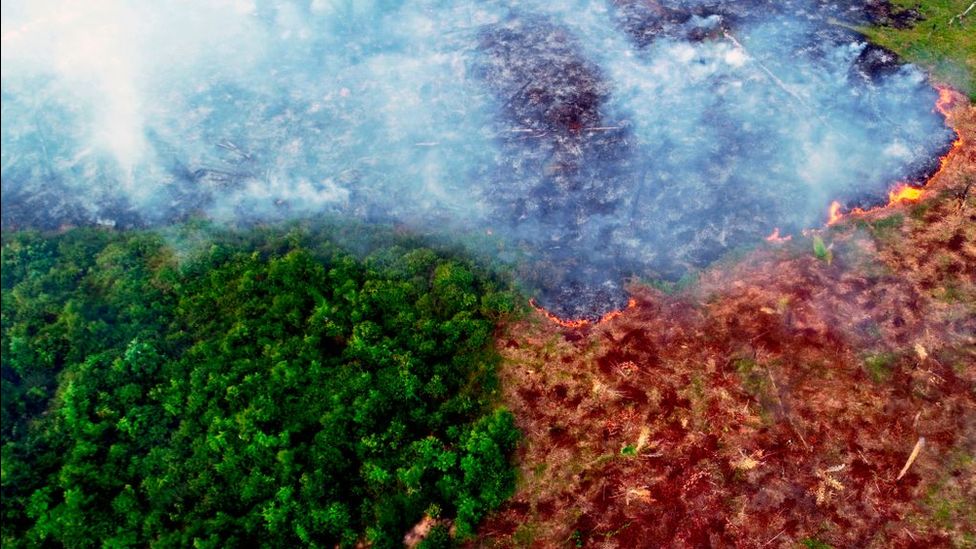Earlier this year, a study showed that the rainforest in Brazil released about 20% more CO2 into the atmosphere than it took in over the period from 2010-2019.
This new paper underlines that change and finds that some regions of the rainforest were “a steadily increasing source” of carbon between 2010 and 2018.
A source of carbon is an area of the Earth that releases more carbon than it stores.
The researchers used aircraft to take around 600 air samples above selected parts of the rainforest over the years of the study.
They found a very clear division between the eastern and western parts of the rainforest.
“In the eastern part of the Amazon, which is around 30% deforested, this region emitted 10 times more carbon then in the west, which is around 11% deforested,” said lead author Luciana Gatti, with Brazil’s National Institute for Space Research (INPE).
“This is a huge impact, you know directly because we are emitting CO2 to the atmosphere, which is accelerating climate change but also because it is promoting changes in the dry season conditions and stress to trees that will produce even more emissions.”
“This is terrible negative feedback that increases the emissions much more than we knew.”
The researchers say that the forest in the south-east of the Amazon have been very badly hit by deforestation and climate change.
In this area, temperatures have increased in the two hottest months of the year by 3.07C – this is around the same increase seen in the Arctic and around three times the global average.
“This is amazing,” said Dr Gatti. “It’s a complete surprise for the equator layer of the globe.”
Picture Credit: Getty Images
Deforestation and climate change are altering the Amazon rainforest’s ability to soak up carbon, according to a new study.
Significant parts of the world’s largest tropical forest have started to emit more CO2 than they absorb.
The south-east is worst-affected, say scientists, with higher rates of tree loss and an increasing number of fires.
Temperatures there have risen by three times the global average during the hottest months.
Areas of our planet that absorb more carbon from the atmosphere – for example, in the form of the greenhouse gas CO2 – than they store are known as sinks.
The role played by the lands and forests of the Earth in soaking up carbon has been a critical factor in preventing faster rates of climate change.
Since the 1960s, these sinks have taken in around 25% of carbon emissions from the use of fossil fuels.
The Amazon, home to the world’s largest tropical forest, has played a key role in absorbing and storing much of that carbon.
But the growing impacts of climate change and deforestation are taking their toll on this crucial CO2 sponge.

Earlier this year, a study showed that the rainforest in Brazil released about 20% more CO2 into the atmosphere than it took in over the period from 2010-2019.
This new paper underlines that change and finds that some regions of the rainforest were “a steadily increasing source” of carbon between 2010 and 2018.
A source of carbon is an area of the Earth that releases more carbon than it stores.
The researchers used aircraft to take around 600 air samples above selected parts of the rainforest over the years of the study.
They found a very clear division between the eastern and western parts of the rainforest.
“In the eastern part of the Amazon, which is around 30% deforested, this region emitted 10 times more carbon then in the west, which is around 11% deforested,” said lead author Luciana Gatti, with Brazil’s National Institute for Space Research (INPE).
“This is a huge impact, you know directly because we are emitting CO2 to the atmosphere, which is accelerating climate change but also because it is promoting changes in the dry season conditions and stress to trees that will produce even more emissions.”
“This is terrible negative feedback that increases the emissions much more than we knew.”
The researchers say that the forest in the south-east of the Amazon have been very badly hit by deforestation and climate change.
In this area, temperatures have increased in the two hottest months of the year by 3.07C – this is around the same increase seen in the Arctic and around three times the global average.
“This is amazing,” said Dr Gatti. “It’s a complete surprise for the equator layer of the globe.”

The researchers are worried that the changing climate is also interfering with rainfall, which they argue, has immediate consequences for Brazil.
“This is very bad news for everybody but mainly for Brazil,” said Dr Gatti.
“We have lots of problems with lack of precipitation, such as electricity from hydropower becoming more expensive. There are also heavy losses in agriculture.”
“We need to link this with Amazon deforestation and change the behaviour.”
Other scientists who work in this field say that the latest findings are consistent with changes that a range of studies have already shown.
“Deforestation and degradation increase, while the carbon sink of intact forests is stable or is slightly increasing,” said Dr Jean-Pierre Wigneron from France’s Institut National de Recherche Agronomiques (INRA).
“So, finding a negative carbon budget is not so surprising.”
Nancy Harris, from the World Resources Institute (WRI), who has co-authored previous research into the same area, said: “At the end of the day, debating whether the region already is a source – or is teetering precariously on the edge of becoming a source for carbon dioxide – misses the point.
“The science is now clear that the Amazon is in trouble. High emissions from deforestation have plagued the region for decades, and climate change impacts on forests like drought, fire and heat-induced die-offs will become more and more common over the coming decade.”
Article Credit: bbc
